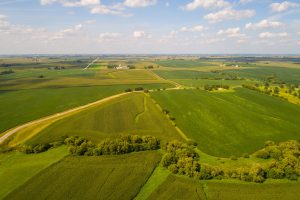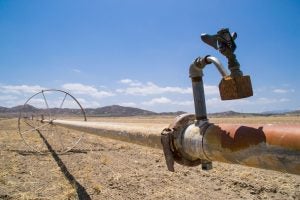Agriculture Secretary Tom Vilsack said the U.S. Department of Agriculture is making 19.5 billion in funding available for agricultural producers and forest landowners nationwide to participate in voluntary conservation programs and adopt “climate-smart” practices.
The Inflation Reduction Act is providing the additional money over five years for “climate-smart agriculture” through several of the conservation programs that that USDA’s Natural Resources Conservation Service implements.
The NRCS is making available $850 million in the fiscal year 2023 for its oversubscribed conservation programs: the Environmental Quality Incentives Program, Conservation Stewardship Program, Agricultural Conservation Easement Program, and Regional Conservation Partnership Program.
“The Inflation Reduction Act provided a once-in-a-generation investment in conservation on working lands, and we want to work with agricultural and forest landowners to invest in climate-smart practices that create value and economic opportunity for producers,” said Vilsack, who spoke today at the National Association of Conservation Districts annual meeting. “We know that agriculture plays a critical role in the nation’s effort to address climate change, we’re using this funding to bolster our existing programs, maximize climate benefits, and foster other environmental benefits across the landscape.”
The IRA funding includes an additional $8.45 billion for EQIP, $4.95 billion for RCPP, $3.25 billion for CSP, and $1.4 billion for ACEP. The increased funding levels begin in fiscal year 2023 and rapidly build over four years. These additional investments are estimated to help hundreds of thousands of farmers and ranchers apply conservation to millions of acres of land.
Additionally, the IRA provides $300 million to quantify carbon sequestration and greenhouse gases through the collection and use of field-based data to assess conservation outcomes. Information gained through this effort will be used to improve practices and technical assistance to customers. Further guidance on this important work will be provided as the implementation of this portion of the IRA continues.

How to Apply
The NRCS accepts producer applications for its conservation programs year-round, but producers interested in EQIP or CSP should apply by their state’s ranking dates to be considered for funding in the current cycle.
Funding is provided through a competitive process and will include an opportunity to address the unmet demand from producers who have previously sought funding for climate-smart conservation activities.
For ACEP Agricultural Land Easements or Wetland Reserve Easements, applications for the current IRA funding cycle must be submitted by March 17, 2023, for the first funding round. This year, NRCS will prioritize ACEP-ALE for grasslands in areas of highest risk for conversion to non-grassland uses to prevent the release of soil carbon stores. Meanwhile, the NRCS will prioritize ACEP-WRE for eligible lands that contain soils high in organic carbon.
The NRCS plans to roll out the next RCPP funding opportunity in early spring, which will include IRA funds from fiscal year 2023.
Other opportunities for agreements and partnerships at the state level will be announced for fiscal year 2023 in the coming months. The IRA provides funding to support those strategic partnerships with local, regional and national organizations. This will include outreach to underserved producers to ensure IRA climate funding is reaching those who have been previously unable to access conservation assistance.
Water Supply Investments
The USDA also released today the Western Water and Working Lands Framework for Conservation Action that identifies 13 strategies that guide the NRCS’ investments for helping agricultural producers and communities respond to the significant challenges resulting from threats to the water supply in the Nation’s most arid landscapes.

Assistance delivered through these water-related strategies also helps build resilience to climate-change impacts such as droughts, wildfires, and floods. Many of the resilience-focused activities and systems are also Climate Smart Agriculture and Forestry mitigation activities, which support carbon sequestration or greenhouse gas emissions reductions. Climate-smart mitigation activities are supported by the additional investments available from the IRA. As part of the Western Water and Working Lands Framework, the USDA is also announcing and highlighting other drought focused investments, including the WaterSMART Initiative.


